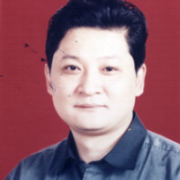- 胰腺内分泌肿瘤的治疗
- 胰头癌的治疗
- 腹部切口疝的治疗方法
- 乳腺导管内乳头状瘤的治疗
- 疝气治疗方法
- 甲状腺癌碘131治疗的认识误区
- 乳腺纤维腺瘤的治疗
- 乳腺增生的治疗方法
- 甲状腺癌治疗方法
- 甲状腺结节的治疗方法
- 甲状腺髓样癌的治疗
- 甲状腺癌的手术治疗规范
- 亚急性甲状腺炎的治疗
- 甲状腺癌术后随访指南
- 甲状腺癌骨转移的治疗
- CA153与乳腺癌
- 服用三苯氧铵会产生何种不良反应...
- 甲亢的治疗
- 小儿疝气的治疗方法
- 切口疝的治疗方法
- 单纯性甲状腺肿的治疗方法
- 甲状腺囊肿的治疗方法
- 乳腺的解剖、生理
- 乳腺自我检查
- 日常生活中如何进行乳房保健
- 乳腺导管内乳头状瘤的治疗
- 复发、转移乳腺癌的治疗
- 乳腺癌的化学治疗(化疗)
- 乳腺癌的放射治疗
- 乳腺癌的预防方法
- 乳腺癌的病因
- 甲状腺功能减退症的治疗方法
- Modified Radica...
- 口服华法令的患者术前准备要点
- 慢性淋巴性甲状腺炎(桥本氏甲状...
- 甲状腺结节预防方法
- 甲状腺癌的手术治疗
- 乳腺癌改良根治术的手术技巧
- Operative Techn...
- 复发、转移、残余甲状腺癌的治疗...
- 胰头癌的治疗
- 乳腺癌骨转移的治疗
- 晚期乳腺癌的治疗方法
- 浆细胞性乳腺炎的治疗
- 胰腺内分泌肿瘤的治疗
- 以基因表现做基础的乳腺癌新分类
- 乳腺肿块在什么情况下需手术切除
- 乳腺癌前哨淋巴结活检的临床意义
- 乳腺癌哨兵淋巴结的判定方法
- 甲状腺肿瘤的治疗方法概述
- 甲状腺腺瘤的治疗方法
- 甲状腺有关激素与抗体检测的临床...
- 甲状腺位置、形态、功能
- 疝气的日常护理
- 腹部切口疝的治疗方法
- 疝气的症状、病因及危害
- 小儿疝气的治疗方法
- 甲状腺结节的超声鉴别诊断
- 乳癌诊疗之原则与新趋势
- 乳腺癌的手术治疗
- 乳房的手摸检查及筛查工具
- 「三阴性」乳癌的化学治疗
- 甲状旁腺功能亢进症的治疗进展
- 老年疝气治疗方法
- 甲状腺腔镜手术的利弊
- 霍普金斯手术记录:胰十二指肠切...
- Bilateral level...
- 乳腔镜腋窝淋巴结清扫手术经验
- Exploration and...
- liver tranplans...
- 霍普金斯手术记录:甲状旁腺次全...
- 霍普金斯手术记录:再次中央区淋...
- 霍普金斯手术记录:微创甲状旁腺...
- 霍普金斯手术记录:微侵袭甲状旁...
- 霍普金斯手术记录:颈入路胸骨后...
- 霍普金斯手术记录:甲状腺全切+...
- 双侧乳房切除+右前哨淋巴结清扫
- 霍普金斯手术记录:右腋窝淋巴结...
- 霍普金斯医院乳腺癌手术记录1
- 乳腺癌根治术技巧
- 乳头乳晕重建
- 美国教学医院的查房见闻
- 小儿疝气手术时机
- 约翰.霍普金斯医院介绍(全美医...
- 腹外疝新疗法简单有效??访福建...
- 黄东航大夫的个人简历(CV)
- 乳腺癌手术方式
- 乳腺癌分期
- 乳腺癌的分期
- 乳腺增生如何治疗?
- 绝经后乳腺癌的内分泌治疗
- 标准Lichtenstein疝...
- 腹腔镜辅助大隐静脉隔绝术治疗大...
- 疝气手术不能小视
- 静脉曲张怎么治疗
- 疝气复发怎么办
- 甲状腺手术中喉返神经的寻找方法
- 腹膜前无张力修补术在股疝治疗中...
- 乳腺钙化的类型和意义
- 乳腺癌手术治疗方法
- 几种特殊情况的疝气手术
- 多功能保留颈清扫术
- 甲状腺癌颈根治术步骤
- 甲状腺癌NCCN指南
- 2009年NCCN甲状腺癌临床...
- 警惕乳腺癌治疗六大误区
- 甲状腺癌的非手术辅助治疗
- 乳腺组织缝合技巧----DXY...
- 下肢静脉造影术及不良反应的预防
- 腹部外科手术技巧与原则
- 胃癌根治术操作规范
- 肿瘤治疗的误区
- 不同部位结肠癌的手术方式
- 门静脉高压症的治疗方法
- 美国国家癌症中心(NCI)胃癌...
- 乳腺增生的治疗方法(患乳腺增生...
- 切口感染导致的切口疝非要一年时...
- 甲状腺癌的治疗方法(甲状腺癌切...
- 副乳需要手术吗?
- 复发疝的治疗?
- 成人腹股沟疝气怎么治疗?
- 碘131治疗甲状腺癌的注意事项
- 乳腺癌的治疗方法
- 胃癌的规范化治疗
- 疝气治疗方法
- 霍普金斯手术记录:右乳金属丝定位区段切除
- 作者:黄东航|发布时间:2011-10-22|浏览量:592次
Title of Operation:
Right breast wire-localized lumpectomy.
Indications for Surgery:
Reason for Visit: This patient has a diagnosis of a right breast abnormal mammogram. This was an area that was not amenable to biopsy. Therefore, an excisional biopsy is recommended.福建省立医院基本外科黄东航
Preoperative Diagnosis:
Right breast abnormal mammogram.
Postoperative Diagnosis:
Right breast abnormal mammogram.
Anesthesia:
General by LMA.
Specimen (Bacteriological, Pathological or other):
Right breast wire-localized lumpectomy.
Prosthetic Device/Implant:
None.
Surgeons Narrative:
Estimated Blood Loss: 50 cubic centimeters.
Drains: None.
Complications: None.
Findings: The specimen radiograph indicates that the abnormalities contained within the specimen.
Description of Procedure: The patient presented to the operating room and placed in the supine position on the operating table where general anesthesia was induced. The right breast was prepped and draped in the usual sterile manner. There was a wire in place. It was traveling into the breast at approximately 7 o"clock position and traveled along the border of the areola. The lateral edge of the areola was anesthetized with 0.25% percent Marcaine. An incision was then made at the border of the areola and carried down through the subcutaneous tissues using electrocautery. After passing through that tissue, the wire was brought into the field. This lesion was very superficial and the thick portion of the wire was directly under the skin. After bringing the wire into the field, I began excising a segment of tissue around that wire ensuring that the superficial tissue was excised, this segmented tissue was approximately 1 cm in diameter surrounding the wire. After excising that tissue, it was oriented for pathology with short suture superior, long suture lateral, and then it was sent for specimen radiograph. In the meantime, the wound was irrigated. Hemostasis was ensured using clips electrocautery. The breast tissue was reapproximated using up to 3-0 Vicryl sutures. The deep dermal layers approximating 3- 0 Vicryl sutures and the skin was closed with running 4-0 subcuticular stitch. In the meantime, the specimen radiograph came back indicating that the abnormalities contained within the specimen. Therefore, no additional dissection was performed. The patient was awakened from the operating room and extubated to the recovery room in stable condition. All needle, instrument, and sponge counts were correct at the conclusion of the procedure.
CLINICAL STAGE OF TUMOR:
Benign.
Drains: None.
Complications: None.
Findings: The specimen radiograph indicates that the abnormalities contained within the specimen.
Description of Procedure: The patient presented to the operating room and placed in the supine position on the operating table where general anesthesia was induced. The right breast was prepped and draped in the usual sterile manner. There was a wire in place. It was traveling into the breast at approximately 7 o"clock position and traveled along the border of the areola. The lateral edge of the areola was anesthetized with 0.25% percent Marcaine. An incision was then made at the border of the areola and carried down through the subcutaneous tissues using electrocautery. After passing through that tissue, the wire was brought into the field. This lesion was very superficial and the thick portion of the wire was directly under the skin. After bringing the wire into the field, I began excising a segment of tissue around that wire ensuring that the superficial tissue was excised, this segmented tissue was approximately 1 cm in diameter surrounding the wire. After excising that tissue, it was oriented for pathology with short suture superior, long suture lateral, and then it was sent for specimen radiograph. In the meantime, the wound was irrigated. Hemostasis was ensured using clips electrocautery. The breast tissue was reapproximated using up to 3-0 Vicryl sutures. The deep dermal layers approximating 3- 0 Vicryl sutures and the skin was closed with running 4-0 subcuticular stitch. In the meantime, the specimen radiograph came back indicating that the abnormalities contained within the specimen. Therefore, no additional dissection was performed. The patient was awakened from the operating room and extubated to the recovery room in stable condition. All needle, instrument, and sponge counts were correct at the conclusion of the procedure.
CLINICAL STAGE OF TUMOR:
Benign.
CC List:
Referring Physician CC List
TA的其他文章:




